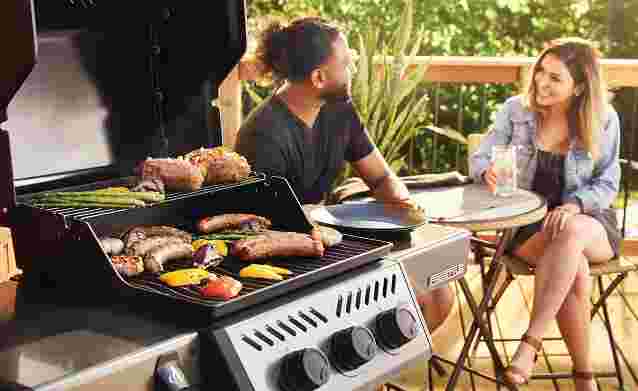Time to Fire Up the Grill
17 May 2023 by Sandra Escobedo in Cuisine, Decorating, General, Home, Pleasure, Products

The first long weekend of the season is approaching, and with it comes thoughts of warmer weather and backyard cookouts over the grill. To ensure you can get the most out of the backyard kitchen, you should be doing more than just pulling it out of winter storage and firing it up. The outdoor cooking season should begin each spring with an inspection and thorough cleaning to not only realize optimum performance from your grill, but to also help make it last.
Springtime is here, but there are a few things you will want to do before you take the cover off and get to cooking your favorite cuts of meat. Whether you put your barbecue away for the winter or tough it out and grill throughout the cold, follow a few simple steps each spring to improve the life and performance of your grill.
Here are Napoleon’s tips for getting your barbecue ready in the spring:
Clean the cooking grids and searing plates. Soak the cooking grills in warm water and soap before giving them a good cleaning to get rid of the grease and food crust that has been burnt on. Season them for the coming season and get ready for some incredible grilled flavours all summer long. While your searing grids are soaking, remove the heat shields (give them a good scrape as well) so you can run your barbecue brush over the burners. This is also a good time to check your igniter and rear burner to make sure all is in working order.
Clean the grease cup. The more you use your grill, the more you will have to clean or replace your grease cup. Before firing up your grill, take out the old and put in the new.
Scrape off the grease tray. All the grease and food remnants from past meals collect and char on the grease tray. No need to get out the soap and water for this one, but give it a good scrape with a spatula or putty knife to clean off all the bits.
Check for leaks. Once your cleaning is done, it is a good idea to visually inspect all hoses and feed tubes on your grill. Look for any crimps, scratching and or punctures. If you detect any of these, it is time to replace the hoses. A leak test should be performed any time your grill has been in storage for a prolonged length of time or when you are changing any components on your grill. Cover each hose with warm soapy water and look for bubbles — if there are no bubbles forming, you are good to go. If there are bubbles, it is indicative of a gas leak that needs repair before using the barbecue.
Check all ignition parts. Now that your grill is clean and safe, it is time to check out how it lights. For battery ignitions it is a good idea to replace the batteries with new ones. Check all electrode leads and ensure the tips of the electrodes are clean and have no grease or rust build up on them. If they do, you can use a fine grit sandpaper to clean them.
Get your basic barbecue tools. Make sure you are equipped with a good grill cleaning brush — cedar scrapers are all the rage right now, but there is something to be said for a good abrasive pad. You will also want to make sure you have a good set of tongs, a quality spatula and it is a great idea to invest in a temperature probe.
Up your grill game. The start of the season is when all the new gadgets come out. Beyond the basics above, consider a rotisserie basket that will enable you to cook pub fare like wings and fries without the fat and oil that typically comes with. Or capture that charcoal-fire flavour on your gas grill with a charcoal and smoker tray.
For more information, please visit www.napoleon.com








